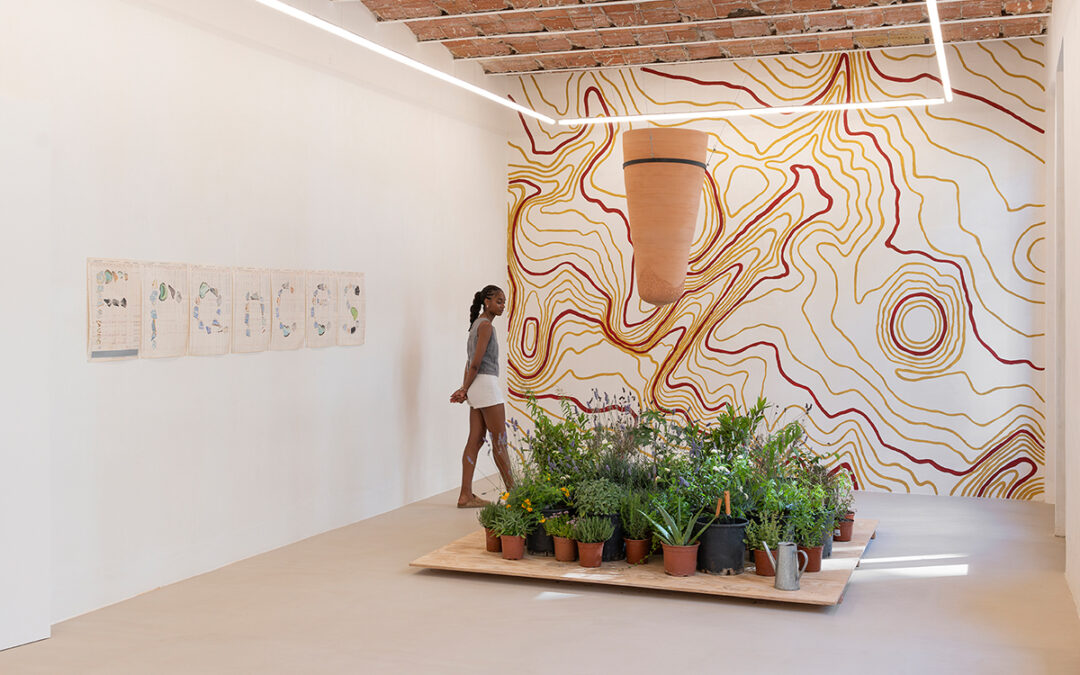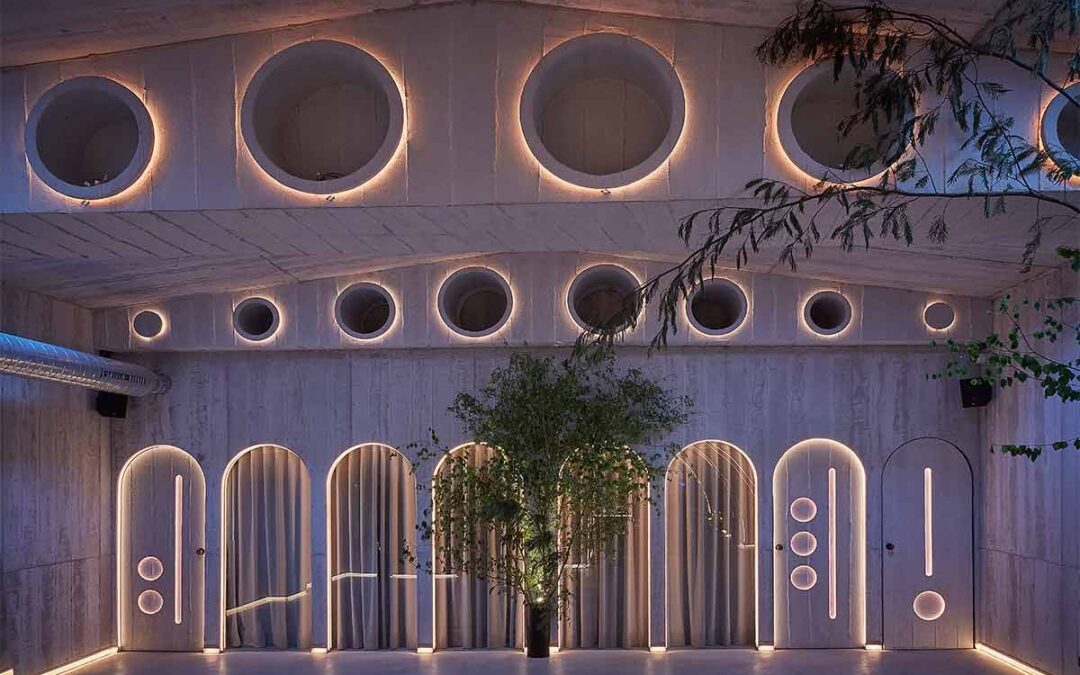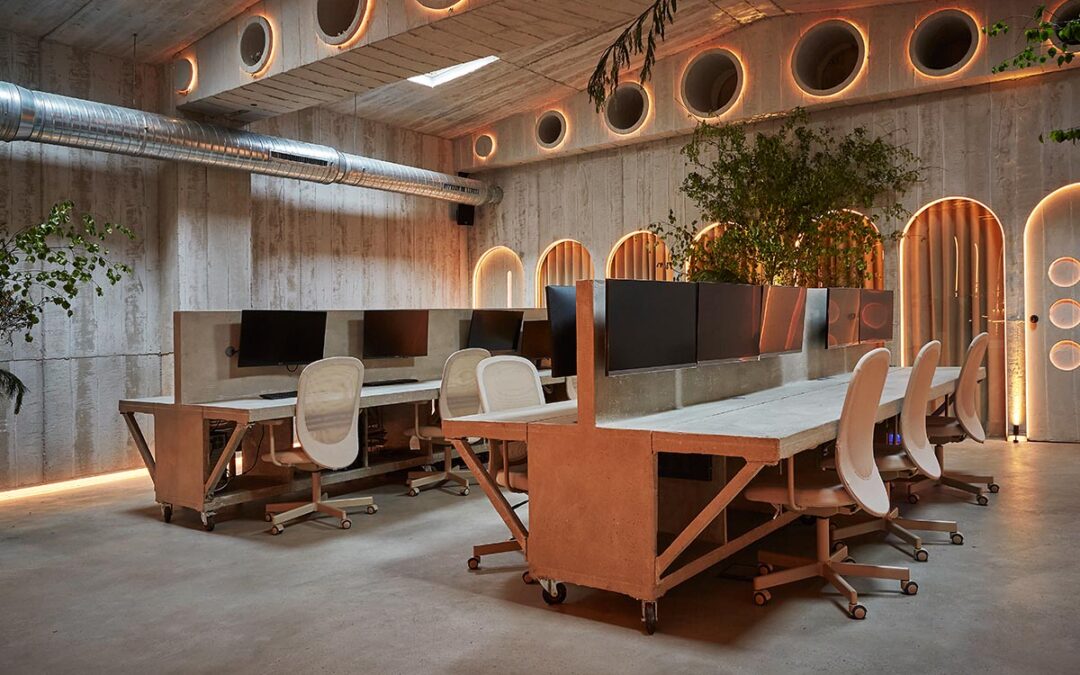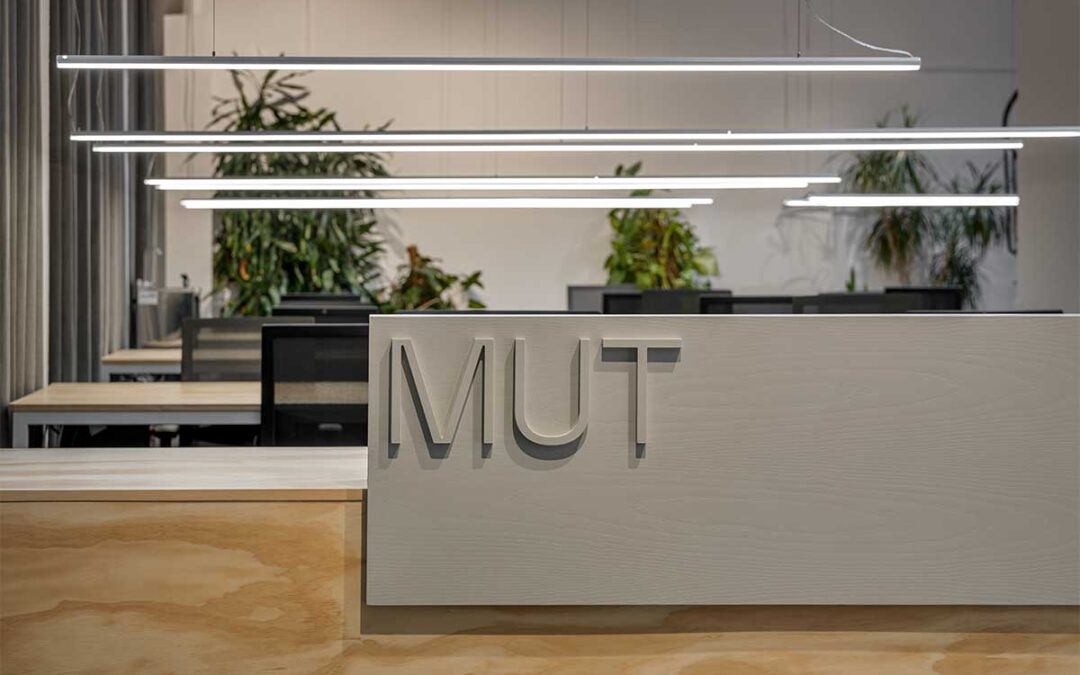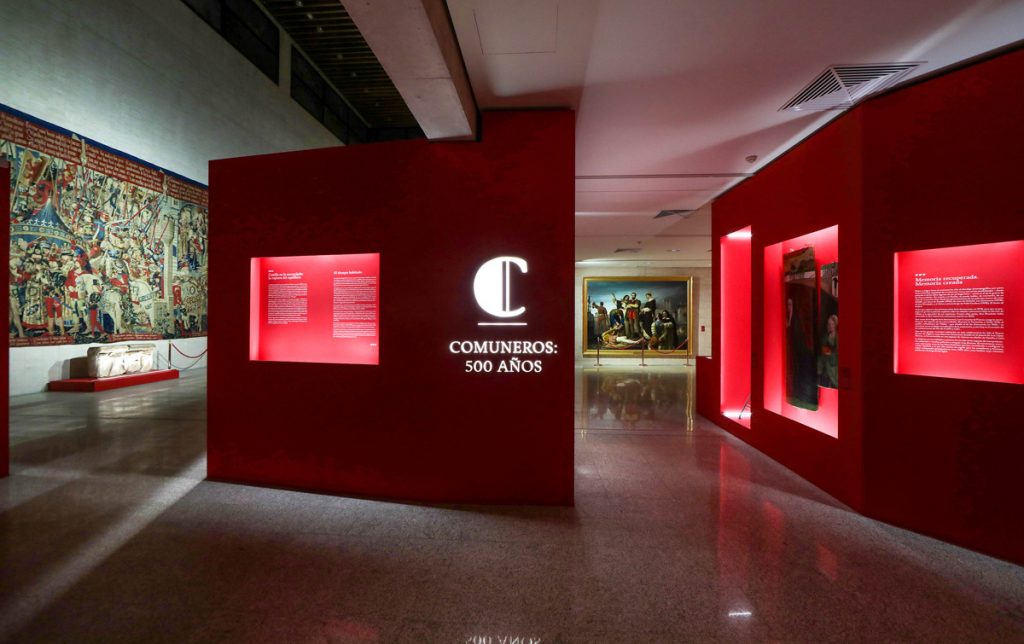
LED linear lights have become an indispensable tool in exhibition lighting due to their small size, low energy consumption and their many customisation possibilities. In museum lighting, the specifications and installation methods must be taken care of down to the smallest detail to achieve the best result.
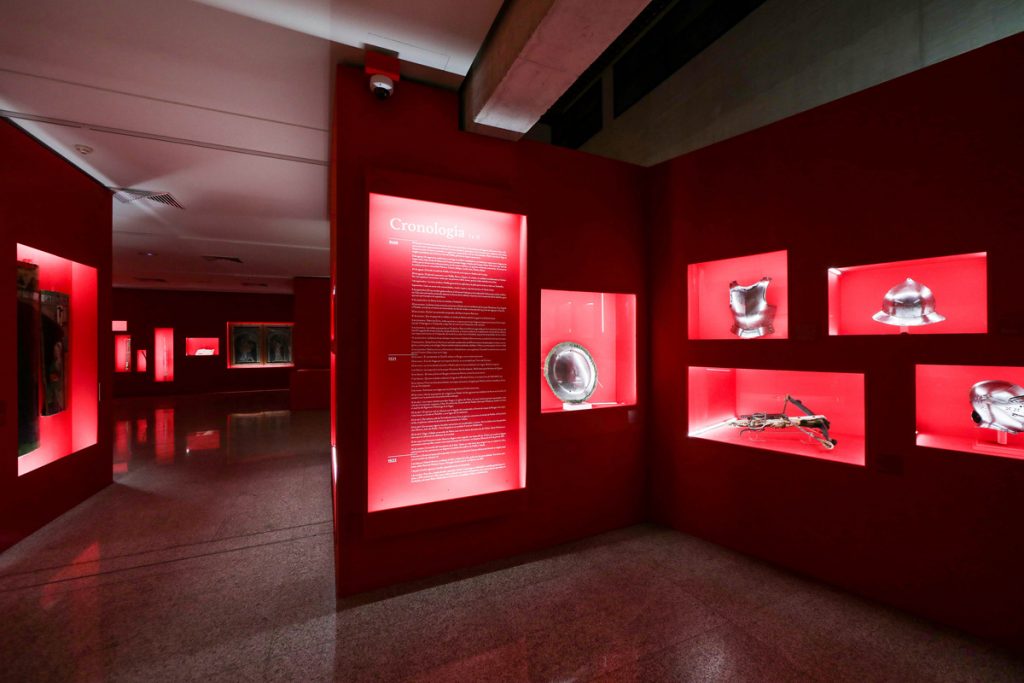
This was precisely the challenge set by lighting designers Mariel Fuentes and Michela Mezzavilla when they studied how to solve the lighting of the “Comuneros: 500 years” temporary exhibition, launched on 22 April at the headquarters of the Cortes of Castile and León in Valladolid. “We needed an LED strip with an excellent colour rendering index, a variety of supports and very complete optics to solve the lighting of a set of pieces that are very different from each other,” explain the designers, “and for that reason we opted for the Lluria Nature range.”
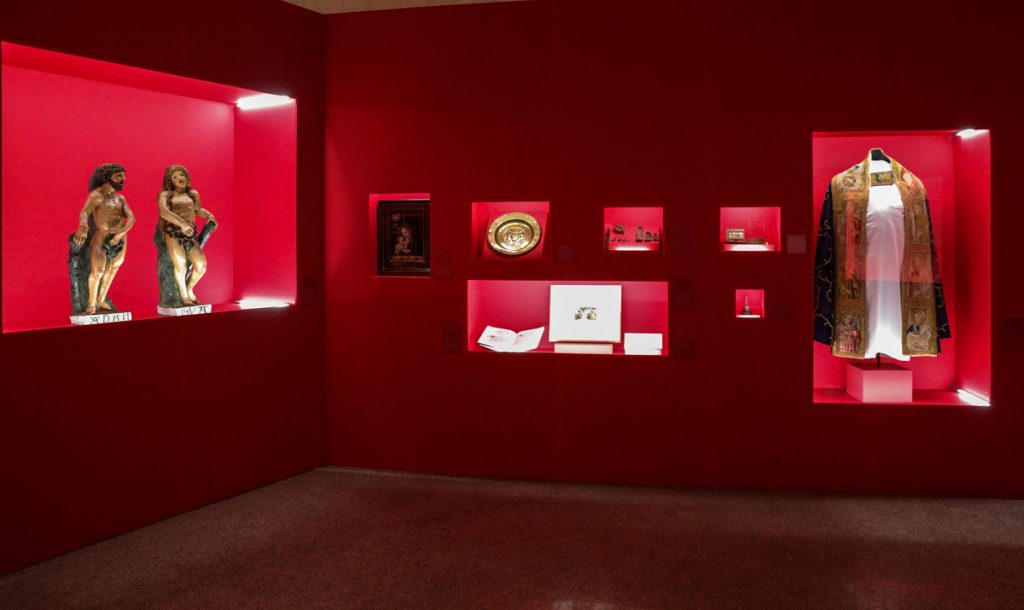
Coordinated by Patrimonio Inteligente, and designed by interior designer Beatriz Rubio, the exhibition is dedicated to the organisers of the Revolt of the Comuneros and to those who worked to keep the political, social and historical legacy of the defenders of the communities alive. It exhibits a total of 150 pieces, donated by prominent Spanish institutions and organisations such as the Congress of Deputies, the Prado and National Archaeological Museums, the National Library, Patrimonio Nacional, the Royal Chancery and the Army Museum, as well as private collectors, temples and other institutions of a different nature. The exhibition includes tapestries, paintings, weapons, coins, sculptures, miniatures, bas-reliefs, old documents, books and a wide variety of pieces of great historical and artistic value that are being exhibited together for the first time.
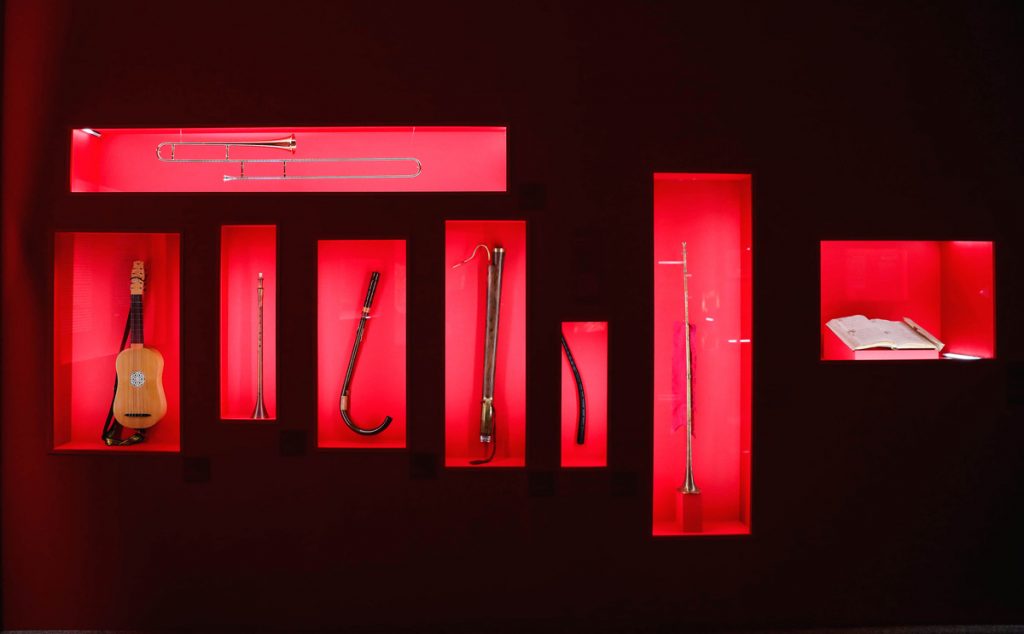
The aim of the exhibition is to represent a key historical moment through different perspectives, to offer a contained, impartial vision, so that it is the viewer who draws their own conclusions.
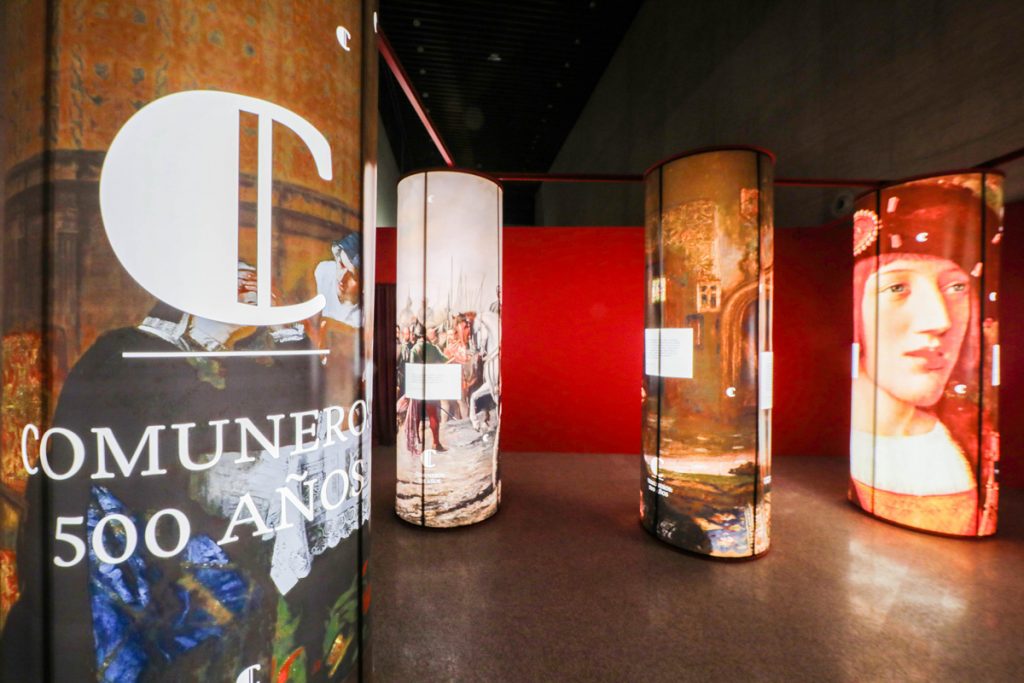
At the entrance, consistent with this approach, large backlit cylinders welcome the visitors, instantly immersing them in large-scale images of the time for them to observe at leisure, playing with their individual point of view. Specially designed for the exhibition, each of these cylinders is lit by four stretches of LED Nature lights.
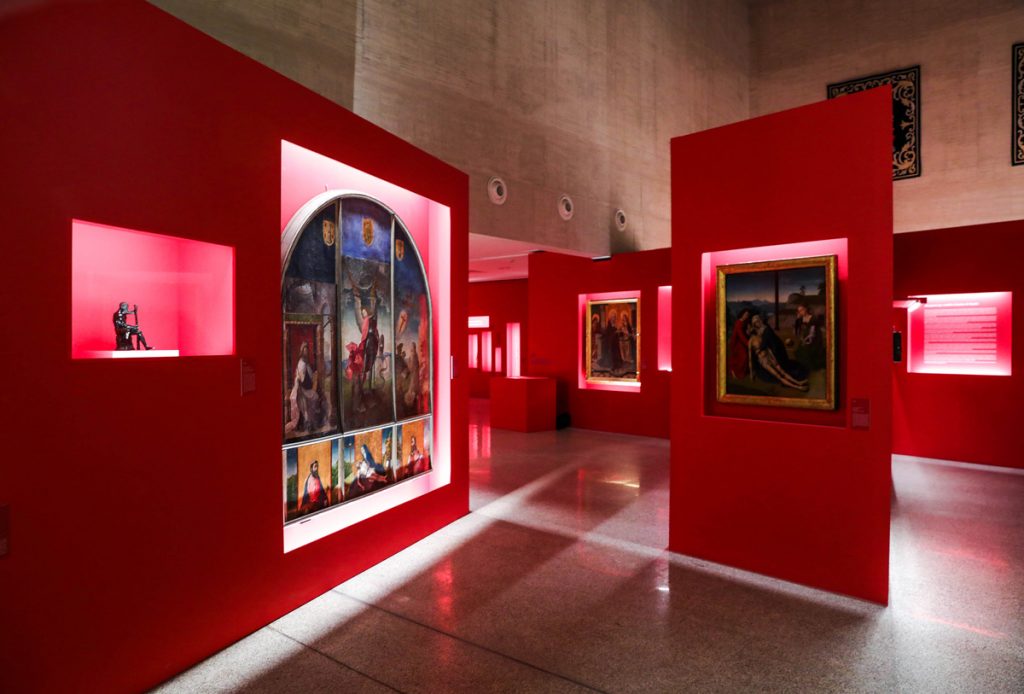
Inside the lobby, the pieces are organised along a large red columnar structure and placed in different display cabinets or on pedestals and supports, depending on the origin and nature of each item. In this sense, the use of LED Nature strips has been key to obtaining an excellent final result, due to its ability to optimally and realistically reproduce the reds and the rest of the colour ranges, in addition to the various materials displayed in the exhibition.
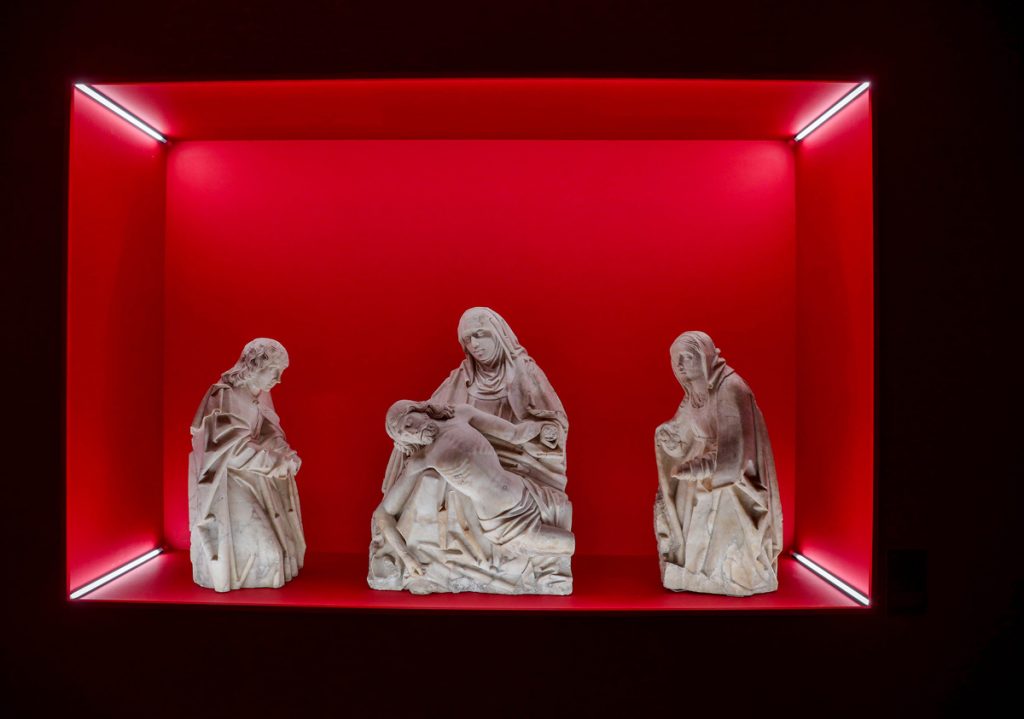
The light discourse translates the non-partisan and “democratic” stance of the exhibition story into a simple yet effective light display, providing the same lighting level to all the collections and pairing a specific linear lighting solution with each type of piece. “We categorise different types of pieces and, from there, we work out seven types of lighting, combining different elements of Lluria’s systems: optics with a more closed or open angle and fixed or adjustable frames that are hidden or visible,” Mariel Fuentes points out.
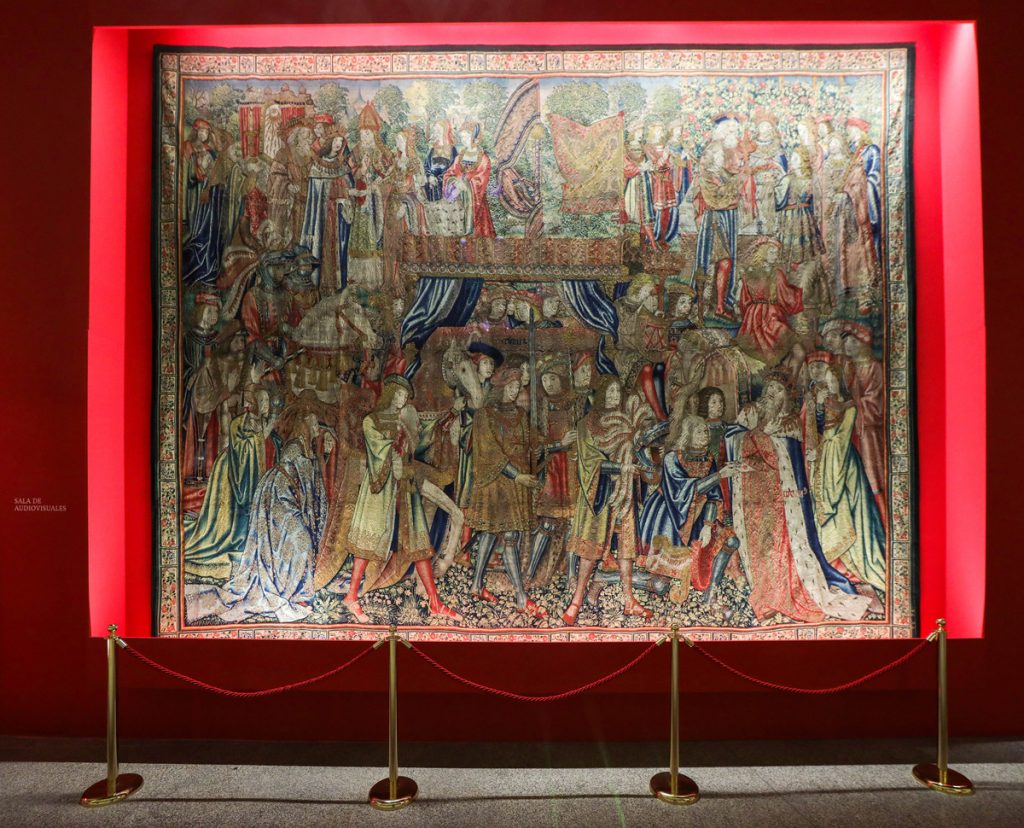
The tapestries and large paintings make use of the ST2D profile, due to its orientability and its more concentrated optics. The profile is hidden in a detail specially conceived by the lighting designers.
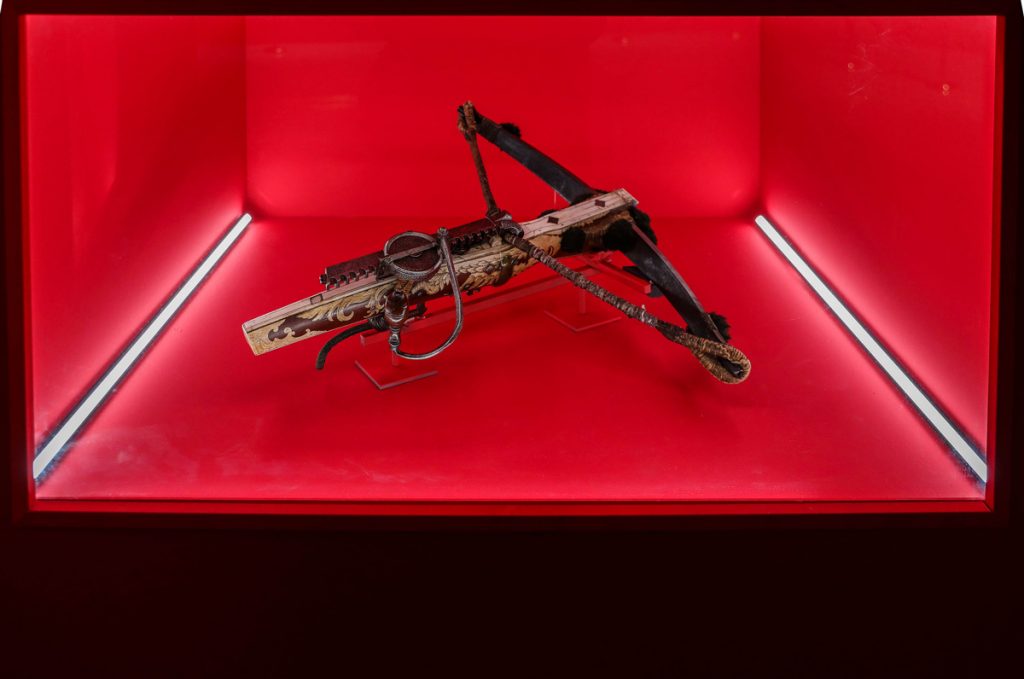
Alcoves are lit with 45˚ profiles positioned in different ways depending on the dimensions, the materials and the type of pieces, with different integration details. Freestanding display cabinets also generally make use of built-in 45˚ profiles. Some of the sculptural pieces placed on pedestals are illuminated by integrating the ST2D profile in a custom-designed uplighting detail, for a more dramatic effect.
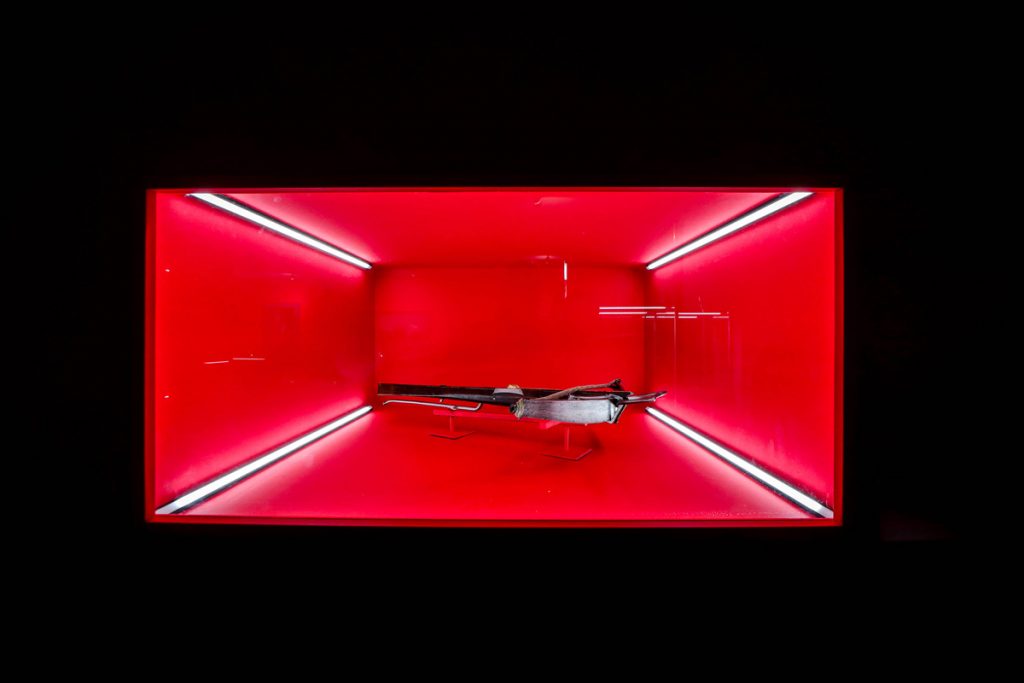
A purpose designed system with an arm is used to light the most volumetric pieces mounted on the surface of the exhibitors. The texts are also lit with linear lighting, either from the front or through light boxes, depending on the relevance and placement of the text itself within the exhibition.
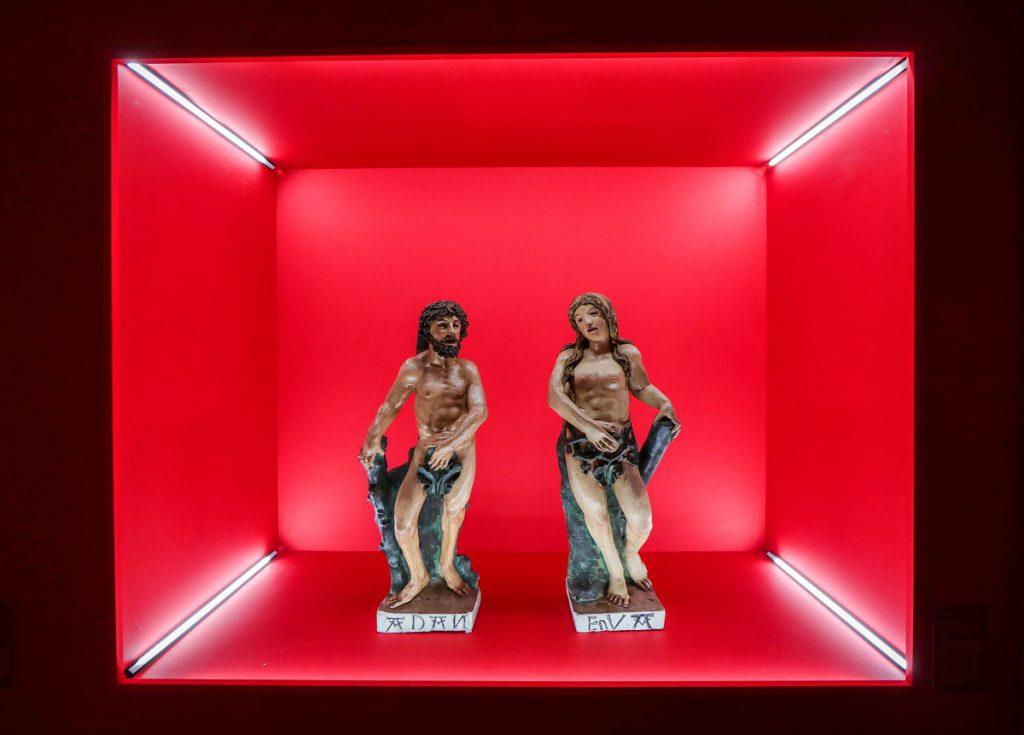
All the LED strips are DALI dimmable in order to be able to adjust the lighting levels required for the most fragile pieces. The lighting level of each one of these has determined the reference lighting, which the rest of the exhibition has been adapted to.
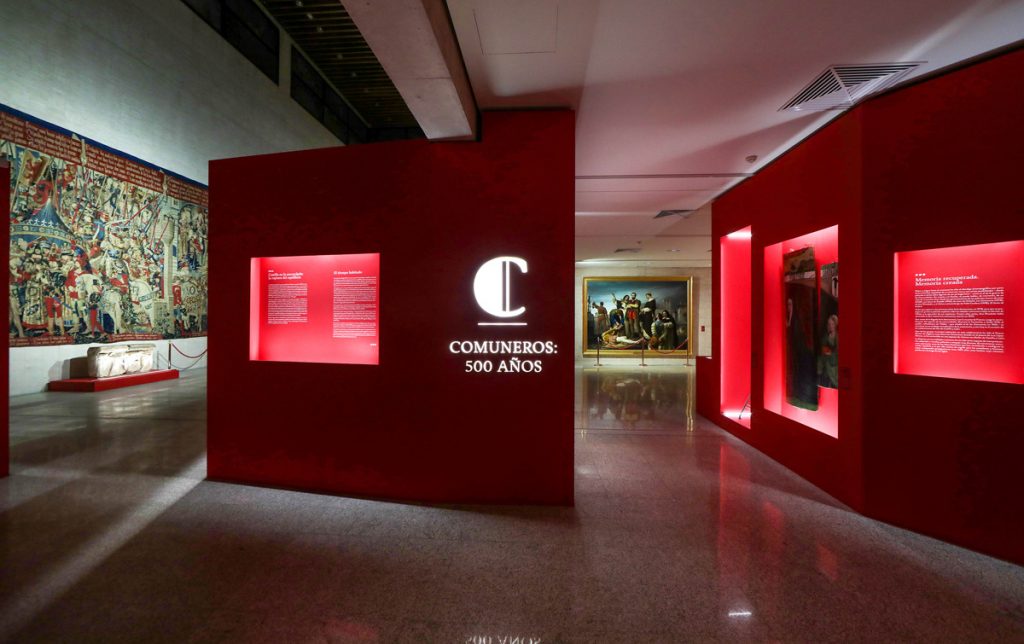
“In this project it was essential to work very closely with the interior architect from the beginning, to coordinate and define the details of all the linear luminaires in the display cases and cabinets, achieving optimal integration. It is a project carried out with great dedication and attention to detail, taking care of each solution and each item so that it shines to the fullest,” adds Michela Mezzavilla.

It is worth mentioning that the deadlines for executing a project are usually very tight in temporary exhibitions, so, according to the designers, another reason for choosing Lluria was because of the quality of the service offered and the ease of receiving all the material cut to size and organised, ready for installation.
Temporary exhibition «Comuneros: 500 años»
Promoter: Fundación Castilla y León
Project: ElArte Ideas y Patrimonio Inteligente
Museographic design: Studio Azul
Production coordination: Beatriz Rubio de Studio Azul
Lighting design: Mariel Fuentes de LDLUZ y Michela Mezzavilla de reMM
Photography: Francisco J. De las Heras





